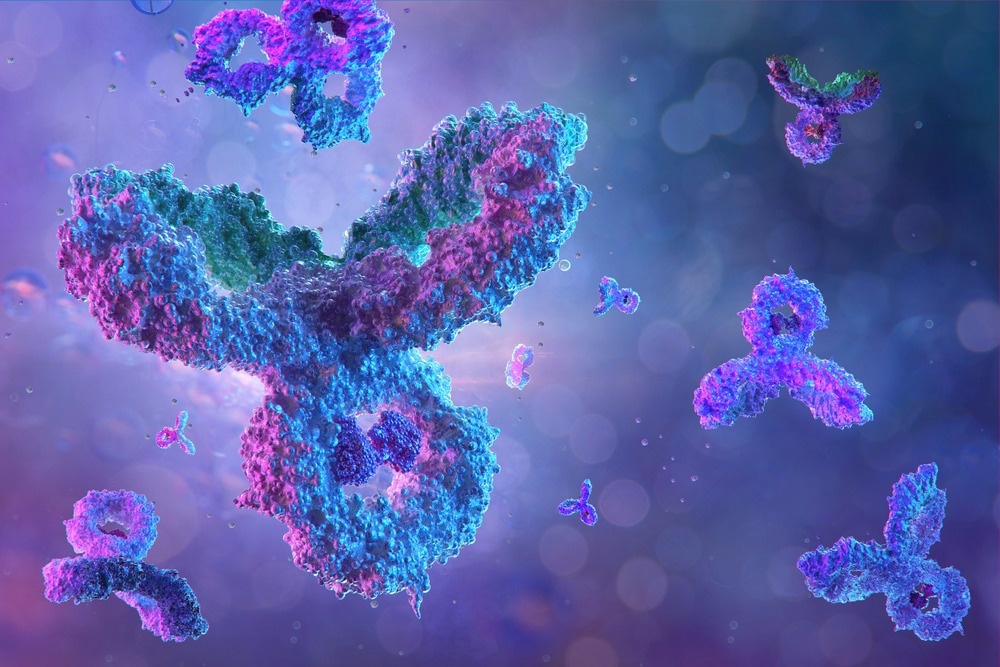In a recent study published in Nature Machine Intelligence, a team of researchers used a deep antibody-antigen interaction (DeepAAI) algorithm to understand the antibody representations of unseen antibodies to accelerate the discovery of novel antibodies with potential therapeutic applications.

Background
Lab Diagnostics & Automation eBook

The human body is thought to produce antibodies in the order of 1020 during an immune response to viral infections. Of these, only a small portion have neutralizing effects on the virus. Some antibodies only opsonize the antigen. Compared to neutralization, where the antibody is directly involved in preventing the pathogen from binding to the host cell, opsonization is a process where the antibody marks the pathogen for destruction by phagocytosis carried out by macrophages.
A large number of antibodies generated during an immune response remain unseen, and their antigen interactions can be detected only through resource- and time-intensive wet-lab experiments such as enzyme-linked immunosorbent assay (ELISA), phage-display, pseudoviral assays, etc. Computational methods that can conduct preliminary screenings for antigen neutralization can accelerate the identification of novel antibodies by narrowing down the targets for wet-lab experiments.
About the study
In the present study, the researchers used the DeepAAI algorithm consisting of two neutral networks — the convolutional neural network (CNN) and the adaptive relation graph convolutional network (AR-GCN) — to predict the antigen neutralization ability of unseen antibodies and to examine the local features inside the antigen and antibody.
Predicting antibody-antigen interactions is based on predicting the antigen-antibody binding sites, differentiating the binders from non-binders, and deciphering the neutralization vs. non-neutralization effects of the interaction. While other studies have attempted to use GCN and CNN to predict bindings sites and discriminate binders from non-binders, some of the challenges in these methods include a cold-start problem due to the absence of antigen neutralization information for unseen antibodies and the lack of optimal protein descriptors to represent antibodies and antigens.
The DeepAAI algorithm constructs two adaptive relation graphs between antibodies and antigens using AR-GCN and uses Laplacian smoothing for the representation of unseen antibodies and seen antigens. The attributes of the nodes in the relation graphs convey the representations of the antibodies and antigens, and the edge weights provide information on the antibody-antigen relations.
Additionally, while the AR-GCN determines the global features of antibodies and antigens which are based on the interactions between them, a CNN module determines the local features of the amino acids at the antigen and antibody interface, which have an impact on their affinities.
Furthermore, the study evaluated the performance of the DeepAAI algorithm in identifying unseen antibody representations by using severe acute respiratory syndrome coronavirus 2 (SARS-CoV-2), dengue, influenza, and human immunodeficiency virus (HIV).
The performance of DeepAAI and its variants, which include combinations of global features such as position-specific scoring matrices (PSSMs) and k-mer frequency counting (kmer) and local features represented by sequences (seq), were compared to eight baseline methods. The baseline methods comprised four types of sequence-based models — those that predict binding sites, those that predict protein-protein interactions, classical sequential models, and those that have been successful in wet-lab experiments.
Results
The results from the evaluation of DeepAAI on unseen antibodies of HIV revealed that all three variants of DeepAAI — DeepAAI (PSSM + seq), DeepAAI (kmer + seq), and DeepAAI (PSSM + kmer + seq) —performed better than the eight baseline methods in accuracy, precision, and F1 score in predicting the neutralizability of unseen antibodies against HIV.
In the experiments with SARS-CoV-2, DeepAAI was able to recommend 50 out of the 2,587 antibodies against SARS-CoV-2 as broad-spectrum antibodies with potential neutralization ability against the Omicron variant.
When evaluated using influenza and dengue antibodies, the DeepAAI (kmer + seq) outperformed the best baseline method in predicting unseen influenza antibodies, but no significant difference in performance could be seen between the DeepAAI variants and best baseline methods for unseen dengue antibodies.
Conclusions
Overall, the DeepAAI algorithm and its variants outperformed all the baseline methods in predicting neutralizing ability of unseen antibodies against various viruses, including HIV and SARS-CoV-2.
The DeepAAI algorithm, available on a web service with free data and codes, can be used for preliminary screening of unseen antibodies to determine the neutralizing or non-neutralizing effects of antibody-antigen interactions and for determining the half maximal inhibitory concentration (IC50) values to decide the subsequent wet-lab experiments. Furthermore, the authors believe that since the algorithm does not require knowledge of antibody and antigen structures and uses amino acid sequence data, it is conducive to real-world applications.
- Zhang, J. et al. (2022) "Predicting unseen antibodies’ neutralizability via adaptive graph neural networks", Nature Machine Intelligence. doi: 10.1038/s42256-022-00553-w. https://www.nature.com/articles/s42256-022-00553-w
Posted in: Drug Discovery & Pharmaceuticals | Life Sciences News | Medical Research News
Tags: Amino Acid, Antibodies, Antibody, Antigen, Assay, Cell, Cold, Coronavirus, ELISA, Enzyme, Frequency, HIV, Immune Response, Immunodeficiency, Influenza, Omicron, Opsonization, Pathogen, Phagocytosis, Protein, Respiratory, SARS, SARS-CoV-2, Severe Acute Respiratory, Severe Acute Respiratory Syndrome, Syndrome, Virus
.jpg)
Written by
Dr. Chinta Sidharthan
Chinta Sidharthan is a writer based in Bangalore, India. Her academic background is in evolutionary biology and genetics, and she has extensive experience in scientific research, teaching, science writing, and herpetology. Chinta holds a Ph.D. in evolutionary biology from the Indian Institute of Science and is passionate about science education, writing, animals, wildlife, and conservation. For her doctoral research, she explored the origins and diversification of blindsnakes in India, as a part of which she did extensive fieldwork in the jungles of southern India. She has received the Canadian Governor General’s bronze medal and Bangalore University gold medal for academic excellence and published her research in high-impact journals.
Source: Read Full Article





